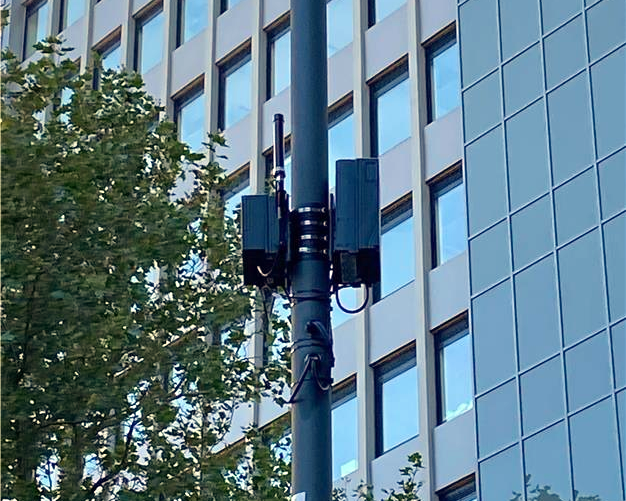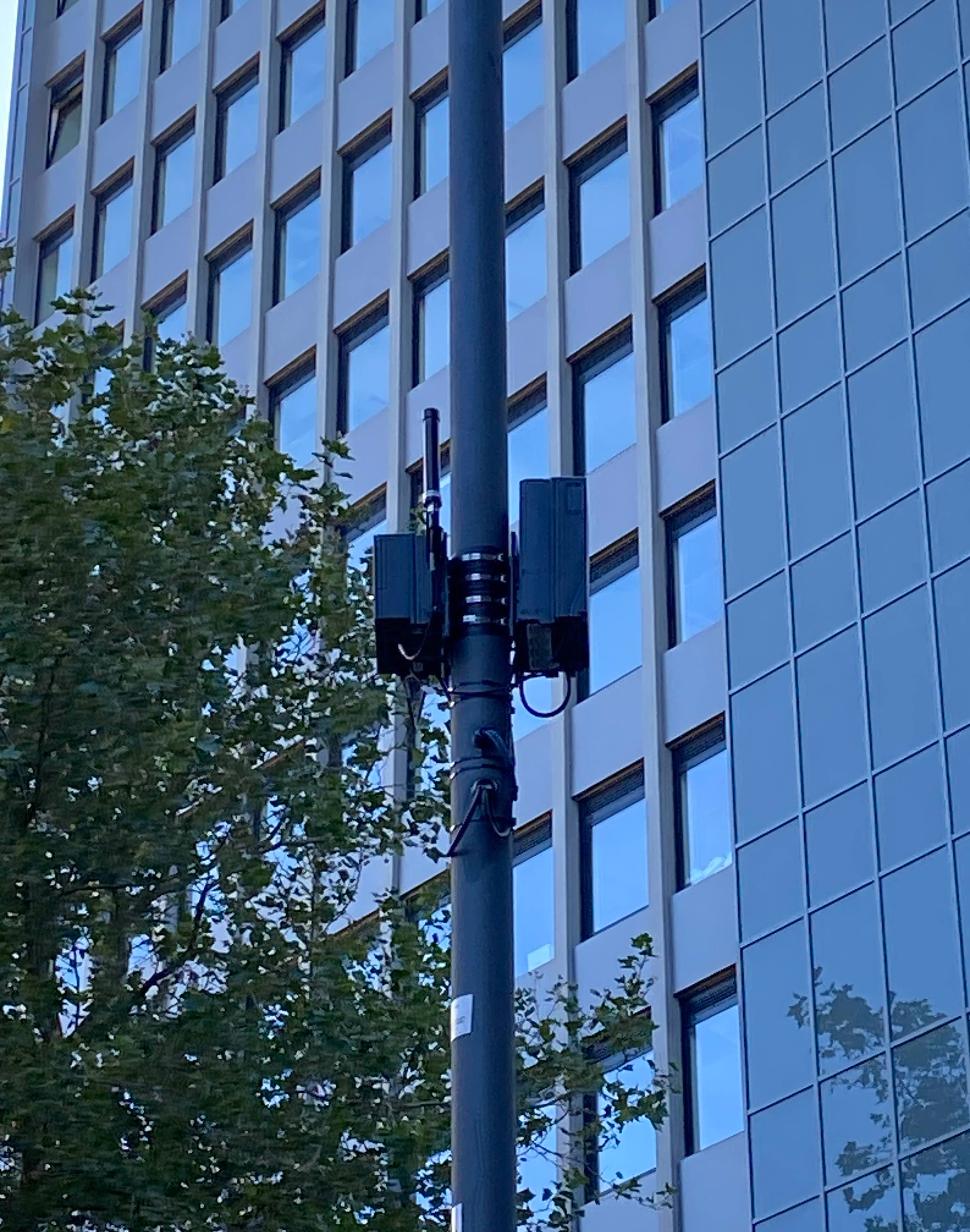Mediacentre

- 28 Jul 2023
- ·
- UK
Wi-Fi 6 Vs 5G: The Key Differences
With industries now relying on faultless connections for next-generation smart solutions, Cellnex UK explores the benefits and key differences between 5G and Wi-Fi 6.
What is Wi-Fi 6?
Wi-Fi 6 is the latest evolution of Wi-Fi technology that provides faster speeds, improved performance, and increased capacity for multiple connected devices. It still works as you would typically expect by helping users connect to the internet.
What are the benefits of Wi-Fi 6?
Wi-Fi 6 boasts a maximum theoretical download speed of 9.6 Gbps, although this will rarely, if ever, be realised in a commercial or residential capacity. A key benefit of Wi-Fi 6 is its ability to handle multiple devices at once, providing a consistent user experience, with minimal interruptions.
Other benefits of WIFI 6 for a business are:
-
Increased Capacity
Multi-User, Multiple Input, Multiple Output (MU-MIMO) allows WIFI 6 access points (AP) to transmit data concurrently to a large number of devices and also maintain a minimum level of performance for all connected users.
-
Available Devices
A huge range of devices are built with Wi-Fi compatibility, both in the home and for business use. This, coupled with the advantage of not needing any kind of SIM card to work, means that a Wi-Fi network is extremely effective for some use cases, particularly those with no mobility requirement.
-
Compatibility
Wi-Fi 6 has also been designed with backwards compatibility in mind. If your workplace relies on ageing technology, or is moving into the smart solution’s era one machine at a time, Wi-Fi 6 is built to handle both types of hardware.
What is 5G?
5G is the successor of 4G and is the fifth generation of mobile cellular technology. 5G offers higher network capacity, faster data speeds compared to 4G networks and ultra-low latency for real-time applications. 5G rollout is underway in the UK by all mobile network operators and is being increasingly deployed by enterprises for industrial applications. The latter are known as 5G Private Networks.
What are the benefits of using 5G?
5G enables much faster data speeds, the connection of smart devices, and secure real-time applications. For Mobile Network operators this means they are able to bring enhanced services and experiences to their subscribers, whilst benefiting from improved network and spectrum efficiency.
For businesses, a dedicated 5G Private Network supports increased data-security, automation, site efficiencies and worker safety. Businesses can benefit from their own dedicated network for multiple use cases.
The key benefits of using 5G are:
-
Low latency
5G networks have significantly reduced latency compared to 4G and Wi-Fi. Latency refers to the time it takes for data to travel between devices. With lower latency in 5G, there is minimal delay in transmitting and receiving data, which is crucial for applications requiring near real-time communication, such as online gaming, remote surgery, or autonomous vehicles.
-
Faster Speeds
5G networks can provide significantly faster data speeds compared to previous generations. Download and upload speeds can reach up to multiple gigabits per second, enabling quicker access to content, smoother streaming, and faster downloads. Manufacturing, Transport and Logistics industries are using this benefit to significantly improve their processes.
-
Increased Capacity
The technology behind 5G networks improves capacity in every way and facilitates the connection of an even larger number of devices simultaneously. All this is particularly important in crowded areas like stadiums or city centres, where many people are connected to the network simultaneously, or where a business requires the connection and management of a multitude of sensors and other devices.
-
New Applications
The high-speed and low-latency capabilities of 5G open up a plethora of new, innovative applications. These include virtual and augmented reality experiences, remote robotic control, autonomous vehicles, smart infrastructure, telemedicine, and more. 5G provides a foundation for technological advancement and enables the development of new services and use cases that were previously not feasible.
5G vs Wi-Fi 6: How do they compare?
When comparing 5G Private Network solutions from Cellnex UK to Wi-Fi 6 deployment, there are several benefits to using 5G.
Below, we have compared some of the key differences:
-
5G vs Wi-Fi 6: Enhanced Coverage and Range
5G Private Networks are longer-range and provide broader coverage compared to Wi-Fi 6. This is especially beneficial for large indoor spaces or areas with challenging radio frequency environments. Using spectrum available in the UK, 5G can penetrate through obstacles more effectively, ensuring better connectivity in complex indoor environments, and a wider footprint across wider areas.
-
5G vs Wi-Fi 6: Security
Both 5G and Wi-Fi 6 offer great security options that protect your users and data. The way they do this, however, is slightly different. Wi-Fi 6 uses a WPA3 certification, which has been designed to improve authentication versus the previous WPA2 model. WPA3 also provides better strength and reliance for networks.
5G network protection goes even deeper than Wi-Fi 6 by using advanced encryption protocols and SIM authentication. Many of us will be familiar with how SIM cards work on a phone, but 5G actually uses this data to understand who can gain access to your network. For other kinds of sensor or device – including IoT sensors – virtual eSIMs can be configured to allow only authorised devices to connect to the network. 5G is the more secure solution and provides extra layers of security that is not possible with WiFi 6.
-
5G vs Wi-Fi 6: Mobility
One of the significant advantages of 5G over Wi-Fi 6 is mobility. 5G is a cellular network technology that allows you to stay connected while on the move. It provides seamless connectivity by handing over from cell to cell, even when you’re travelling in a vehicle or moving between different coverage areas. Wi-Fi 6, on the other hand, is primarily designed for local area networks (LANs) and provides connectivity within a limited range, typically in fixed locations like homes, offices, or indoor public hotspots.
-
5G vs Wi-Fi 6: Scalability
As your business grows, you want to ensure that your technology does not hold you back from your true potential. That is why it is important to consider the scalability of your connectivity solution.
Wi-Fi 6 can scale effectively for localised environments like homes, offices, or public indoor spaces. Wi-Fi 6 networks can support numerous devices, but their performance may start to degrade in extremely dense environments or when dealing with a massive number of connected devices.
5G networks, in comparison, are highly scalable and capable of supporting a massive number of devices simultaneously. They are designed to handle the growing demand for connected devices and applications, such as IoT devices and autonomous vehicles.
5G vs Wi-Fi 6: Which connectivity solution is right for my business?
Although Wi-Fi 6 and 5G both provide many benefits, 5G’s superior mobility, stronger security and scalability gives it the edge over Wi-Fi 6 for many business requirements.
In a world where data demands are increasing, and smart solutions are being prioritised, the push for a network with robust security, extremely low latency, and the ability to support a massive number of devices, is essential.
How can Cellnex UK help to improve your connectivity?
We can supply a purpose-built, industry-grade 5G Private Network that delivers the speed and security you need to seamlessly connect your assets, equipment and the people in your business. For more information, get in touch.




























